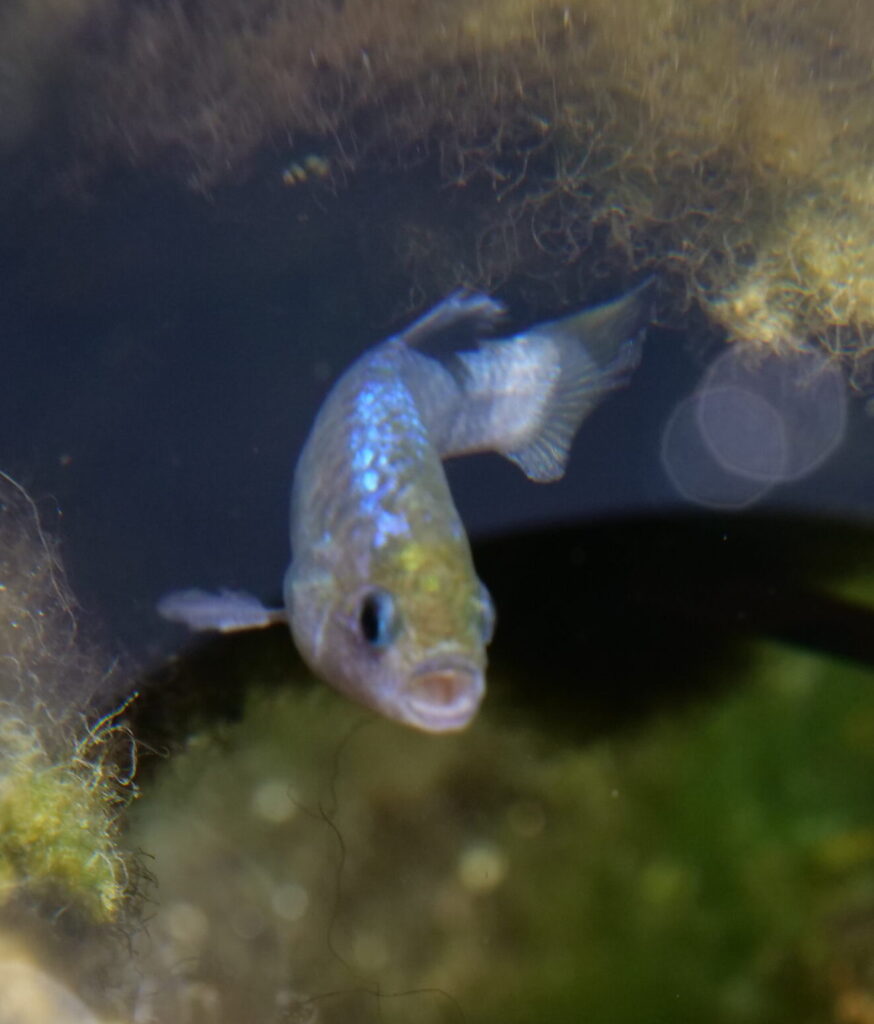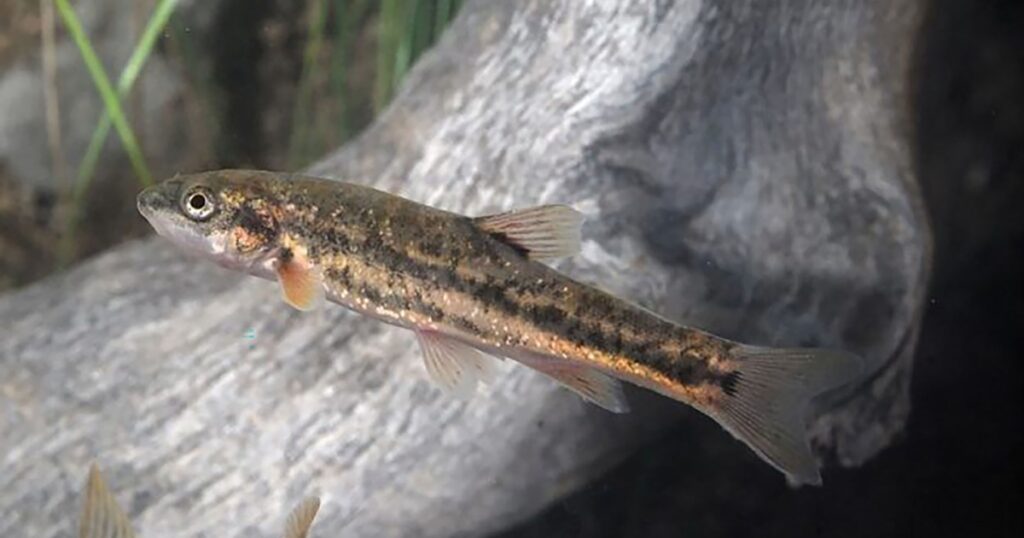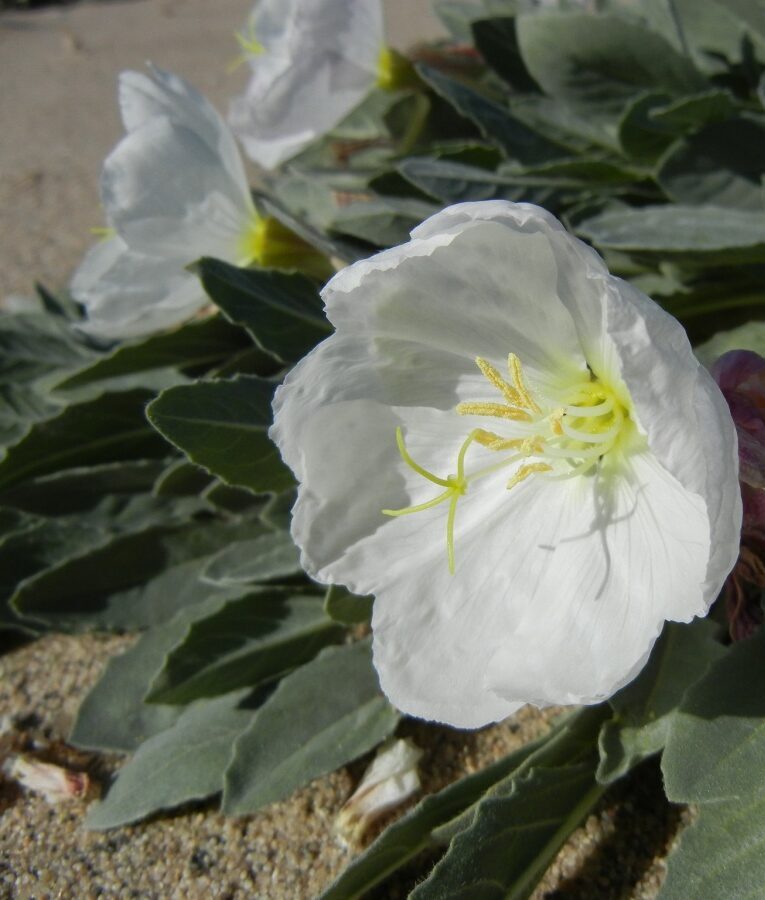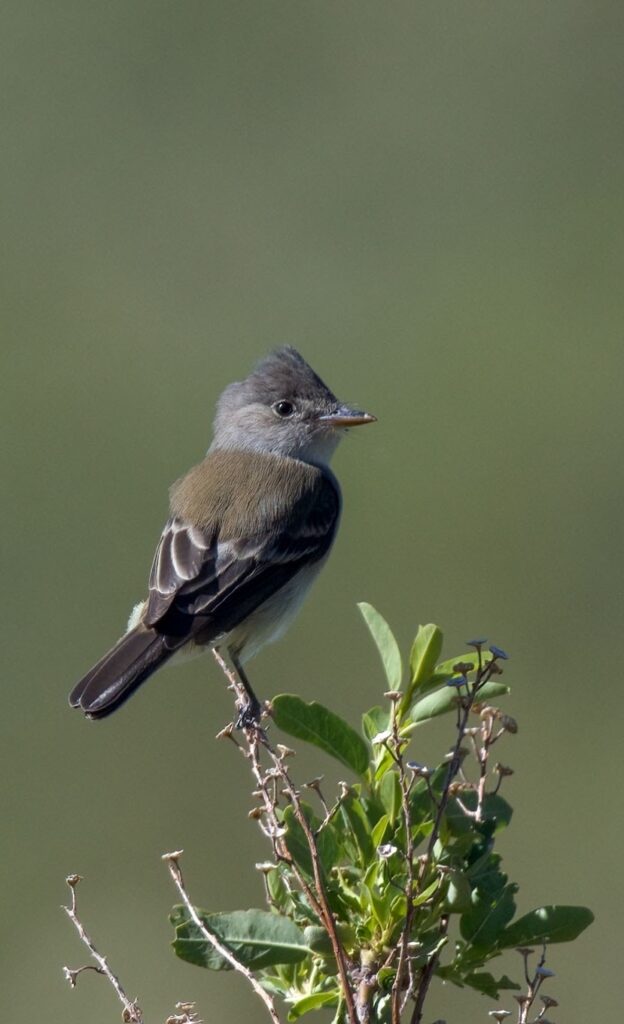
Amargosa River pupfish (Cyprinodon nevadensis amargosae)
Status:
- ESA: Endangered
- IUCN Red List: Vulnerable
About the Species:
The Amargosa pupfish can tolerate various water temperatures, salinity levels, and dissolved oxygen levels. Conservation efforts for the Amargosa pupfish include habitat protection and restoration, monitoring of populations and water resources, and the control of invasive species.
Threats:
Habitat loss/degradation due to water diversion and land development
Competition and predation from non-native species

Ash Meadows speckled dace (Rhinichthys osculus nevadensis)
Status:
- ESA: Endangered
- IUCN Red List: N/A
About the Species:
The Ash Meadows speckled dace is typically found in spring-fed streams, pools, and marshes, where it inhabits clear, shallow, slow-moving waters with sandy or gravelly substrates.
Threats:
Habitat loss/degradation due to groundwater pumping, agriculture, and infrastructure development
Predation and competition from non-native fish species

Desert tortoise (Gopherus agassizii)
Status:
- ESA: Threatened
- IUCN Red List: Vulnerable
About the Species:
Desert tortoises are well-adapted to the harsh conditions of their arid habitats and can live up to 80 years or more in the wild. They spend most of their time in their burrows and are most active during the cooler parts of the day, particularly in the early morning and late afternoon.
Threats:
Habitat loss
Urbanization
Illegal collection
Disease

Devils Hole pupfish (Cyprinodon diabolis)
Status:
- ESA: Endangered
- IUCN Red List: Critically Endangered
About the Species:
The Devils Hole pupfish is an extremely rare and endangered species of pupfish native to a single aquatic habitat called Devils Hole. This deep, geothermal spring-fed pool is a detached unit of Death Valley National Park. The population has historically fluctuated, with estimates ranging from a few dozen to several hundred. Additionally, the Devils Hole pupfish has limited distribution due to its isolation, which makes it particularly vulnerable to extinction.
Threats:
Habitat degradation
- Climate change

Eureka Valley evening-primrose (Oenothera californica ssp. eurekensis)
Status:
- ESA: Threatened
- IUCN Red List: N/A
About the Species:
This evening-primrose subspecies is found on the sandy soils of the Eureka Valley, particularly at the sand dunes. It is well-adapted to the harsh conditions of its desert habitat, which include extreme temperature fluctuations, limited rainfall, and intense solar radiation.
Threats:
Habitat loss and degradation
Competition from invasive species
Climate change

Inyo California towhee (Pipilo crissalis eremophilus)
Status:
- Endangered Species Act (ESA): Threatened
- International Union for the Conservation of Nature Red List (IUCN Red List): N/A
About the Species:
The Inyo California Towhee is characterized by its distinctive brownish-gray plumage, rust-colored undertail coverts, and dark gray head. They are ground-foraging birds and primarily feed on insects, seeds, and fruits. They prefer chaparral, sagebrush, and other shrubby habitats, where they can hop on the ground or perch on low branches.
Threats:
- Habitat loss
- Predation by invasive species
- Climate change

Southwestern willow flycatcher (Empidonax traillii extimus)
Status:
- ESA: Threatened
- IUCN Red List: Vulnerable
About the Species:
The Southwestern willow flycatcher is closely associated with riparian habitats, such as dense willow and cottonwood forests, where it feeds on insects and other small invertebrates. These birds are considered an endangered subspecies due to significant population declines over the past century. Primary threats to their survival include habitat loss/degradation, and fragmentation resulting from urbanization, agriculture, water diversion projects, and other human activities. Additionally, it faces challenges from invasive plant species, such as tamarisk (salt cedar), which can outcompete native willows and cottonwoods, altering the structure of riparian habitats.
Threats:
Habitat loss and degradation
Altered habitats due to invasive plant species
Urbanization
